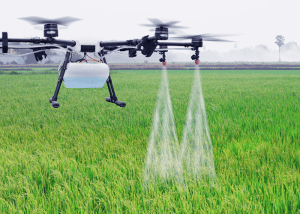Climate change is one of the most pressing issues of our time, with far-reaching impacts on ecosystems, economies, and communities around the world. The need for innovative solutions to mitigate its effects has never been more urgent. Artificial Intelligence (AI) has emerged as a powerful tool in this fight, offering new ways to understand, predict, and combat climate change. This article explores the role of AI in climate change mitigation, its benefits, challenges, and potential future developments.
Understanding Climate Change

Before delving into the role of AI, it’s important to understand the complexity of climate change. Climate change refers to long-term shifts and alterations in temperature and weather patterns, primarily driven by human activities such as burning fossil fuels, deforestation, and industrial processes. These activities increase the concentration of greenhouse gases (GHGs) like carbon dioxide (CO2) in the atmosphere, leading to global warming and associated impacts such as rising sea levels, extreme weather events, and biodiversity loss.
The Role of AI in Climate Change Mitigation
AI encompasses a range of technologies, including machine learning, neural networks, and natural language processing, which can analyze vast amounts of data and make predictions or decisions based on that analysis. Here are some key areas where AI is making a significant impact on climate change mitigation:
-
Climate Modeling and Prediction
One of the most critical applications of AI in climate change is improving climate models and predictions. Traditional climate models are complex and computationally intensive, requiring significant resources to run. AI can enhance these models by processing large datasets more efficiently and identifying patterns that might be missed by human analysts.
Benefits
- Enhanced Accuracy: AI can improve the accuracy of climate predictions by analyzing large volumes of data from various sources, including satellite imagery, weather stations, and historical climate records.
- Faster Processing: AI algorithms can process data faster than traditional methods, providing real-time updates and predictions.
- Better Understanding: Machine learning models can identify complex relationships between variables, improving our understanding of climate dynamics.
-
Energy Optimization
The energy sector is a major contributor to GHG emissions, and optimizing energy production and consumption is crucial for climate change mitigation. AI can play a significant role in enhancing energy efficiency and integrating renewable energy sources.
Benefits
- Smart Grids: AI can manage and optimize smart grids, balancing energy supply and demand, reducing wastage, and integrating renewable energy sources more effectively.
- Predictive Maintenance: AI can predict equipment failures and maintenance needs in power plants, reducing downtime and improving efficiency.
- Energy Management Systems: AI-driven energy management systems can optimize energy use in buildings, reducing consumption and emissions.
-
Agriculture and Land Use
Agriculture is another significant source of GHG emissions, primarily through deforestation, livestock production, and soil management practices. AI can help make agriculture more sustainable and efficient.
Benefits
- Precision Agriculture: AI can optimize crop management by analyzing data on soil conditions, weather patterns, and crop health, reducing the need for fertilizers and pesticides.
- Deforestation Monitoring: AI can analyze satellite imagery to monitor deforestation in real-time, enabling quicker responses to illegal logging and land use changes.
- Soil Health Monitoring: AI can monitor soil health and recommend sustainable practices to maintain or improve it, reducing emissions from soil degradation.
-
Climate Resilience

Building resilience to climate impacts is crucial for protecting communities and ecosystems. AI can help in disaster prediction, risk assessment, and response planning.
Benefits
- Disaster Prediction: AI can predict extreme weather events such as hurricanes, floods, and heatwaves more accurately, allowing for better preparedness and response.
- Risk Assessment: AI can assess the vulnerability of different regions to climate impacts, informing policy and investment decisions.
- Resource Allocation: AI can optimize the allocation of resources for disaster response and recovery, ensuring timely and efficient assistance.
Challenges and Limitations
While AI offers significant potential for climate change mitigation, it also faces several challenges and limitations:
Data Quality and Availability
AI relies on large volumes of high-quality data to function effectively. In many regions, especially developing countries, there is a lack of reliable climate and environmental data. Ensuring data accuracy and availability is crucial for the success of AI applications in climate change.
Computational Resources
AI algorithms, particularly those used in deep learning, require substantial computational resources. This can be a barrier for widespread implementation, especially in resource-constrained settings. Developing energy-efficient AI models is essential to address this challenge.
Ethical Considerations
The use of AI raises ethical questions, including data privacy, algorithmic bias, and the potential for job displacement. Ensuring that AI applications are transparent, fair, and inclusive is crucial for their ethical deployment in climate change mitigation.
Competitive Table
| Company/Organization | AI Application | Key Features | Impact on Climate Change Mitigation |
| Climate Prediction | Machine learning models for weather forecasting | Improved accuracy and timeliness of climate predictions | |
| IBM | Energy Optimization | AI-driven smart grids and energy management systems | Enhanced energy efficiency, reduced emissions |
| Microsoft | AI for Earth | AI tools for agriculture and land use management | Sustainable agriculture, deforestation monitoring |
| ClimateAI | Agriculture | Precision agriculture tools, crop yield prediction | Optimized resource use, reduced agricultural emissions |
| DeepMind (Google) | Energy Efficiency | AI algorithms for data center energy optimization | Significant reduction in energy consumption |
Analysis Table
| Aspect | Traditional Methods | AI-Enhanced Methods |
| Climate Modeling | Complex, resource-intensive, less accurate | More accurate, faster processing, better understanding of climate dynamics |
| Energy Optimization | Manual monitoring and control | Automated, real-time optimization, predictive maintenance |
| Agriculture | Generalized practices, manual monitoring | Precision agriculture, real-time soil and crop monitoring |
| Climate Resilience | Historical data analysis, slower response | Real-time disaster prediction, optimized resource allocation |
Future Prospects
The potential of AI in climate change mitigation is vast, and ongoing advancements promise even greater impact. Future developments may include:
- Improved Climate Models: Continued refinement of AI models will enhance the accuracy and reliability of climate predictions, aiding in better policy and decision-making.
- Integration with IoT: Combining AI with the Internet of Things (IoT) can provide real-time data from a network of sensors, improving monitoring and response capabilities.
- Advancements in Renewable Energy: AI will play a crucial role in optimizing the integration of renewable energy sources, such as wind and solar, into the energy grid, enhancing their efficiency and reliability.
- Enhanced Public Awareness: AI-driven platforms can raise public awareness about climate change and promote sustainable practices through personalized recommendations and educational content.
- Policy Support: AI can support policymakers by providing data-driven insights and predictions, enabling more informed and effective climate policies.
Conclusion
AI is poised to play a transformative role in climate change mitigation, offering new tools and techniques to address one of the greatest challenges of our time. From improving climate models and optimizing energy use to promoting sustainable agriculture and enhancing climate resilience, AI has the potential to make a significant impact.
However, realizing this potential requires addressing challenges related to data quality, computational resources, and ethical considerations. By ensuring that AI applications are transparent, fair, and inclusive, and by investing in the necessary infrastructure and resources, we can harness the power of AI to combat climate change effectively.
In conclusion, the integration of AI in climate change mitigation represents a promising frontier, offering innovative solutions to reduce emissions, enhance sustainability, and build resilience. As technology continues to evolve, so too will our ability to tackle climate change, creating a more sustainable and resilient future for all.












